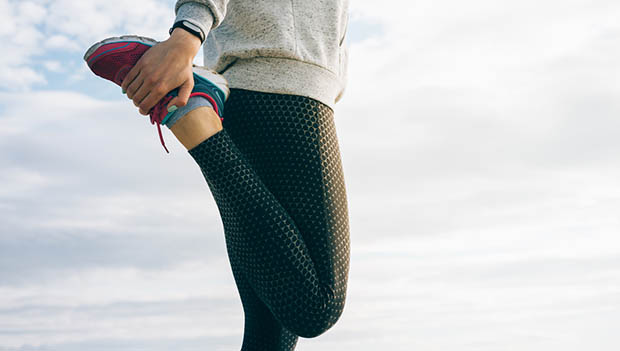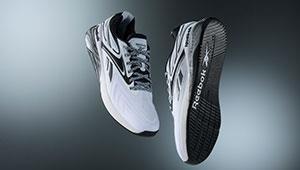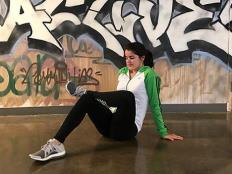
Love it or hate it, stretching is an essential component of any fitness program. But how many of us actually reserve time in our workout to give our muscles the TLC they really need? If you're like a lot of people, getting in one more set of burpees or squeezing in five more minutes on the treadmill often takes priority over stretching.
What if we told you that carving out five minutes at the end of your routine can help you recover faster and set you up to have a better workout next time? Would you give it a try? We asked three experts to give us the scoop on everything you need to know about stretching.
Why Do We Need to Stretch?
If you're on the fence about the importance of stretching, Rachelle Reed, Ph.D., says researchers agree on the many convincing benefits of regular flexibility training. These include increased flexibility, better joint range of motion, reduced risk of injury and improved physical function. Reed, a Kinesiologist and Manager of Training Development at Pure Barre, also points out that stretching can decrease feelings of stress, fatigue and anxiety and improves feelings of energy, mindfulness and positivity.
What Type of Stretching Should You Do?
Reed says that many scientists, physical therapists and fitness professionals tend to recommend dynamic stretching (like walking lunges) as part of a warm-up routine, given its benefits for improving functional ranges of motion. Static stretching (like forward folds), she explains, is typically recommended for after workouts, once the muscle groups are warmer.
When you perform a dynamic stretch, Reed says you will move through a challenging but attainable range of motion several times in a row. Meanwhile static stretching requires you to hold a challenging but attainable position for a longer period of time (i.e., 10 to 30 seconds).
And when it comes to how often you should stretch, CorePower Yoga Manager Amy Opielowski says you should aim to stretch every day. She also recommends incorporating flexibility work into your daily routine.
Like Reed, Opielowski suggests adding dynamic stretches to your warm-up before physical activity to help increase core body temperature and functionally prepare the body for movement. "A dynamic yoga practice requires that all of your muscles work together throughout many directions—side bends, twists, extension and forward folds," she explains. Yoga helps your body move the way it was designed to move.
How Do You Know If You're Stretching Correctly?
"It can be easy to overstretch," says Dr. Kellen Scantlebury DPT, CSCS, and CEO of Fit Club NY. Stretching should never be painful; that's why he always tells his clients it should be a strong but comfortable feeling. "We absolutely do not want to stretch into pain. Some people are also hypermobile and can move their bodies to the extremes of their range of motion without feeling a stretch," says Scantlebury. If that sounds like you, he says you should focus more on strengthening versus stretching.
It takes time to notice improvements in your flexibility, but Reed says you should feel measurable differences in your own body after four to six weeks of regularly stretching at least two to three times a week, 10 minutes each time. "Avoid pushing yourself too far too quickly, and use principles of gradual progression," she says. Every week or so, Reed suggests re-assessing where you are and challenge yourself just a bit more to continue gradually improving your flexibility. If anything is uncomfortable or hard to breathe through, try backing off just a bit.
A Sample Five-Minute Stretching Routine
Opielowski shares this CorePower Yoga Stretching Sequence. Start with one time through, one to two times a day.Cat-Cow: From a tabletop position (on all fours), stack your hands under your shoulders and your knees under your hips. Breathe in and arch your back. Exhale, dome your upper back up to the ceiling as you tuck your chin towards your chest and navel to your spine. Repeat five to 10 times.
Leg Swings: Stand with your feet slightly less than hip-distance apart. With your hands on your hips and a soft bend in your knees, raise your right leg and swing it forward and back. Do these 10 times. Repeat on the other leg.
Supine Hamstring Stretch: Lie on your back with knees bent. Hook a strap, band, towel or belt around the bottom of your right foot. Hold the ends of the strap and extend your right leg toward the ceiling. For an advanced stretch, extend your left leg long onto your mat while the right leg is extended in the air. Hold for 30 seconds and switch legs.
Runner's Lunge With Front Thigh Stretch: Start on your hands and knees and step your right foot to the outside of your right hand. Slide your left knee back so your knee is behind your right toes. Reach your right arm up and twist your torso to the right. Kick your left heel toward your glutes and grab the pinky toe side of your left foot (use a strap or towel for support). Hold for 30 seconds and switch sides. Stretches the front hip of the back leg, outside hip of the front leg and top shoulder and chest of the arm reaching back.
Supine Twist: Lie down on a mat and pull both knees toward your chest. Extend your left leg and extend your right arm out at shoulder height. Move your right knee over to the left until your right hip is stacked over your left hip. Ensure your right upper thigh is in line with your hip. Hold 30 seconds and switch sides.
READ THIS NEXT: 8 Dynamic Stretches
About the Author

Get ACTIVE on the Go


Couch to 5K®
The best way to get new runners off the couch and across the finish line of their first 5K.
Available for iOS | Android



Discuss This Article